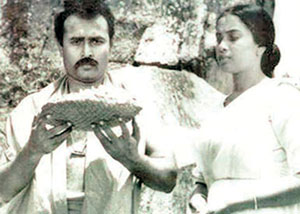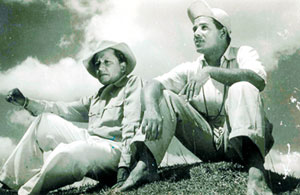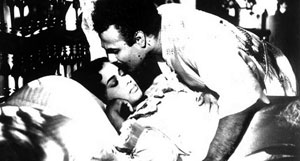Happy Birthday Father of Sri Lankan cinema
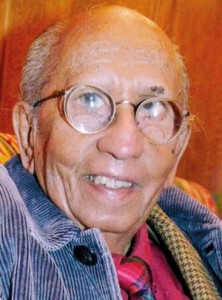
Laster James Peries
Dr. Lester James Peries unarguably the father of Sri Lankan cinema and the legend who inscribed the name of Sri Lankan cinema in the world turns 97 on Tuesday, April 5.
Starting his career as a young cub reporter as young as 17 years, Lester wrote to the blue pages of the Ceylon Daily News. Later In 1939 he joined the Times of Ceylon newspaper and displayed his writing ability under the Indian Editor Frank Moraes and also reviewed books on Radio Ceylon. On the advice of his mother Lester travelled to England in 1947 to join his brother Ivan who was on a scholarship in London. From there too Lester went on contributing to the Ceylon Daily News column from London under the heading “Letter on Arts from London”. Lester’s debut in production was the “Farewell to Childhood” in 1950 a short film based on the story written by him called “Saree”.
The Amateur Cine World Silver Plaque was awarded to this experimental film among the ten best films produced in Great Britain. His second film was “A Sinhalese Dance” and the final film “Soliloquy” was produced in London in 1951 a 20 minute short film based on a threefold love story. The Mini Cinema Cup for short films was awarded to this production for its best technical proficiency by the Institute of Amateur and Experimental Film Makers Festival-Great Britain (1951).
On his return to Sri Lanka Lester joined the Government Film Unit (GFU) and worked with Ralph Keene who was the Director of the GFU. In the first instance Lester assisted Keene to make a documentary film “Nelungama”. Later two documentary films “Conquest in the Dry Zone” (1954) on the Malaria epidemic and “Be Safe or Be Sorry” (1955) were produced for the GFU by his own creation. The film “Conquest in the Dry Zone” won the Diploma of Honour at the Venice Film Festival in 1954. He left the GFU in 1955 after his ambition for production of Sinhala films on his own.
This was the time when the Indian film industry had its influence in Sri Lanka monopolizing their power of technology on the production of Sri Lankan films. With the technology South Indian culture, traditions, music and sometimes even substandard stories were forced on Sri Lankan filmgoers.
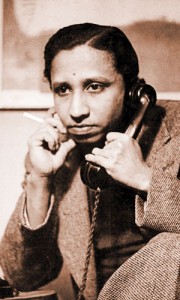
Lester as a young Journalist
Over the years Dr Peiris made about 20 films, enlivening Sri Lankan cinema with accolade after accolade both locally and abroad.
Some of his international acclaimed cinematic productions include Rekhawa (Line of Destiny 1956), Sandeshaya (The Message 1960), Gamperaliya (Changing Village 1964), Delovak Athara (Between Two Worlds 1966), Ran Salu (The Yellow Robe 1967), Golu Hadawatha (The Silence of the Heart 1968), Akkara Paha (Five Acres of Land 1969), Nidhanaya (The Treasure 1970), Desa Nisa (The Eyes 1972), The God King (1975), Madol Duwa (Enchanted Island 1976), Ahasin Polowata (White Flowers for the Dead 1978), Pinhami (1979), Veera Puran Appu (Rebellion 1979), Baddegama (Village in the Jungle 1980), Kaliyugaya (The Era of Kalli – The Changing Village Part II, 1982), Yuganthaya (The Changing Village Part III, 1983), Awaragira (The Sunset 1995), Wekande Wallauwa (Mansion by the Lake 2002) and Amma Varune (Mothers 2007).
We at TV Times wishes this legendary filmmaker a happy birthday and long life.
